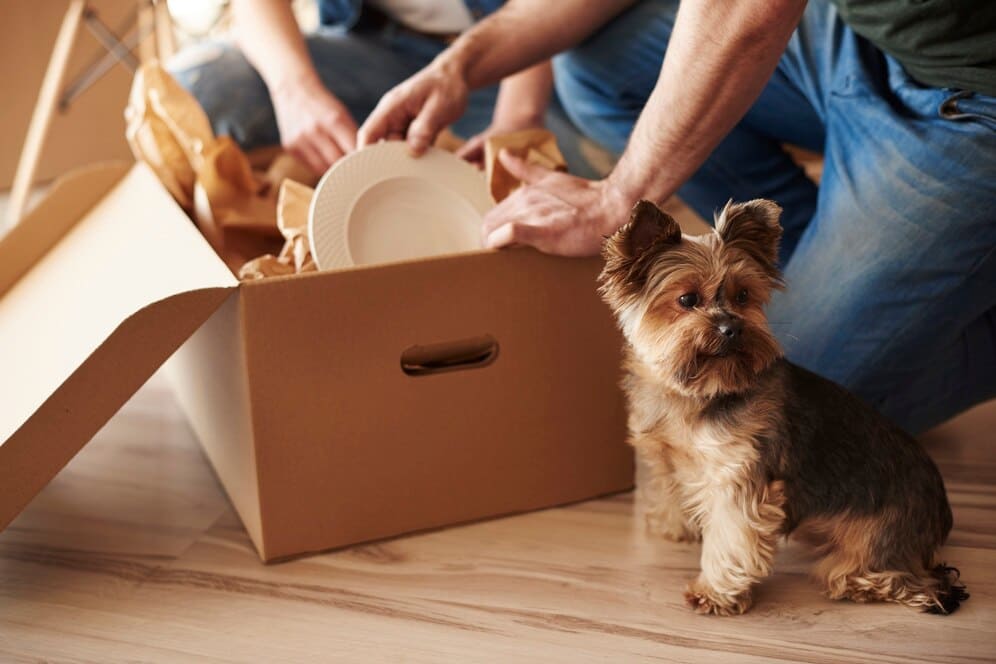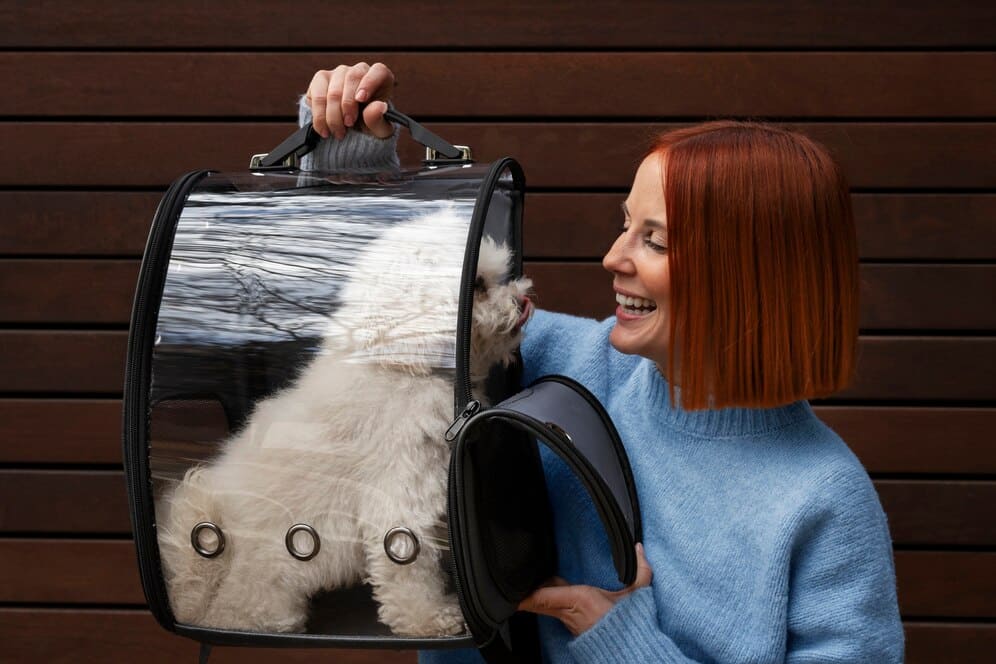Smart Tips When Moving with Your Pets

Moving is no walk in the park, especially when you’ve got your furry companions tagging along. Stress levels tend to skyrocket when pets are involved. Whether you’re uprooting your life across the country or just hopping to a different neighborhood, it’s essential to ensure your little friend doesn’t get caught up in the chaos. That’s where our guide comes in handy — we’re here to offer you some practical tips on how to move with cats across the country (or other animals) in an ordeal as smoothly as possible.
Preparing Your Pet for the Move
As you gear up for your move, it’s equally important to prep your four-legged family members for the journey ahead. Pets, like humans, can find the moving process a bit bewildering, even if it is a local moving, so taking the time to ease them into the transition is key.
- Gradual introductions to packing. Start by introducing your little friend to the moving boxes and packing materials. Allow them to sniff around and get accustomed to the new scents. This gradual approach helps them understand that changes are happening without overwhelming them.
- Maintain routine and familiarity. Amidst the hustle and bustle of packing, try to maintain your pet’s daily routine. Consistency provides them with a sense of security. Keep feeding times, walks, and playtime as close to their usual schedule as possible.
- Consult with your veterinarian. Schedule a visit to the veterinarian before the move. Discuss any concerns you have about your pet’s health during the journey. Your vet may offer advice on managing stress, provide necessary medications, or suggest additional precautions based on your pet’s individual needs.
- Identification and microchip update. Ensure your animal’s identification tags are current and have your new contact information. If your pet has a microchip, update the registration with your new address. These precautions are crucial in case your animal gets separated from you during the move.
- Familiarize your pet with their carrier. If your cat or dog will be traveling in a carrier, introduce it gradually. Place treats, toys, or a familiar blanket inside to make it a positive and comforting space. This helps alleviate anxiety during the journey.
By taking these steps, you’ll help your pet feel more at ease with the changes happening around them, setting the stage for a smoother move for both you and your furry friend.
Planning the Moving
As you gear up for the big move, consider these paw-some planning tips for moving with cats or dogs to ensure your furry friend’s journey is as stress-free as possible.
- Pet-friendly checklist. Create a comprehensive checklist of all the pet essentials, including food, water, favorite toys, and any necessary medications. Having a dedicated list ensures you won’t overlook anything crucial for your pet’s well-being.
- Comfortable travel arrangements. If you’re driving to your new destination, plan for comfortable travel arrangements for your animal. Ensure they have enough space to move, around and include regular breaks for bathroom breaks and short walks. Safety harnesses or carriers can add an extra layer of security during the journey.
- Familiar items in transit. Pack your pet’s favorite items, such as their bed, toys, or blankets, in an easily accessible box. Having familiar scents around can provide a sense of comfort and peace during the move and help them settle into their new environment more quickly.
- Research pet-friendly stops. If you’re traveling a long distance, research pet-friendly rest stops along your route. These designated areas allow your pet to stretch their legs, relieve themselves, and take in some fresh air, making the journey more enjoyable for everyone.
Remember, a well-organized plan is the key to turning your pet’s move into a tail-wagging success!

Adapting to the New Environment
Interstate moving can be just as overwhelming for our furry friends as it is for us. To make the adjustment smoother, carve out a special spot in your new home where your little friend can unwind and feel complete peace and ease. It could be a cozy corner with their bed, toys, and familiar items.
Take it slow and steady. Let your pet explore different parts of the house gradually, allowing them to discover each nook and cranny at their own pace. This helps them build confidence and adapt to the new environment without feeling rushed.
Maintaining their routine is key. Stick to their regular feeding times, play sessions, and walks as closely as possible. Consistency provides a sense of comfort and familiarity during this period of change, helping your pet feel secure in their new surroundings.
Remember, patience is the name of the game. Give your little friends the time they need to adjust, and soon enough, they’ll be wagging their tails and purring contentedly in their new home.
Legal and Administrative Considerations
Certain legal and administrative considerations come into play when relocating with pets. Research local pet regulations and ensure you comply with licensing and vaccination requirements. Update your pet’s microchip information with your new address and contact details. If you’re moving across state lines, be aware of local quarantine or health certificate requirements.
Post-Move Care
Now that you’ve made it to your new home, let’s shift our focus to your furry friend’s comfort. When unpacking, make sure to set up a cozy space with their favorite bed and toys—things that carry their familiar scent. These little things will help them feel at ease, adjust to their new surroundings, and make you understand how to move with a dog or cat.
Keep an eye on your pet for any signs of stress or anxiety. Whether it’s restlessness, excessive grooming, or changes in appetite, pay attention to their behavior and offer comfort through soothing words and cuddles.
It’s also a good time to introduce your pet to the local vet. Schedule a check-up to ensure they’re in tip-top shape and establish a connection with a new healthcare provider in the area.
And don’t forget to learn your new neighborhood together. Take leisurely walks, check nearby parks, and let your pet soak in the new environment. This bonding time not only provides exercise but also helps create positive associations with their new home.
Troubleshooting Common Challenges
Moving with your pets can sometimes be a bumpy ride, with challenges ranging from anxiety to quirky behavior. The key is to approach these common hurdles with patience and empathy.
If you notice your pet showing signs of stress, consider incorporating calming products into their routine or seeking guidance from a professional trainer. Sometimes, a little extra support can make a world of difference.

When it comes to behavior, focus on the positive. Encourage good habits and discourage the not-so-great ones through consistent training and positive reinforcement. Just like us, pets thrive on encouragement and a gentle nudge in the right direction.
Remember, relocation is an adjustment for everyone, including our furry companions. By addressing challenges with a compassionate and understanding approach, you’re not only helping your pet adapt but also strengthening the bond you share.
How useful was this post?
Click on a star to rate it!
Average rating 0 / 5. Vote count: 0
No votes so far! Be the first to rate this post.





